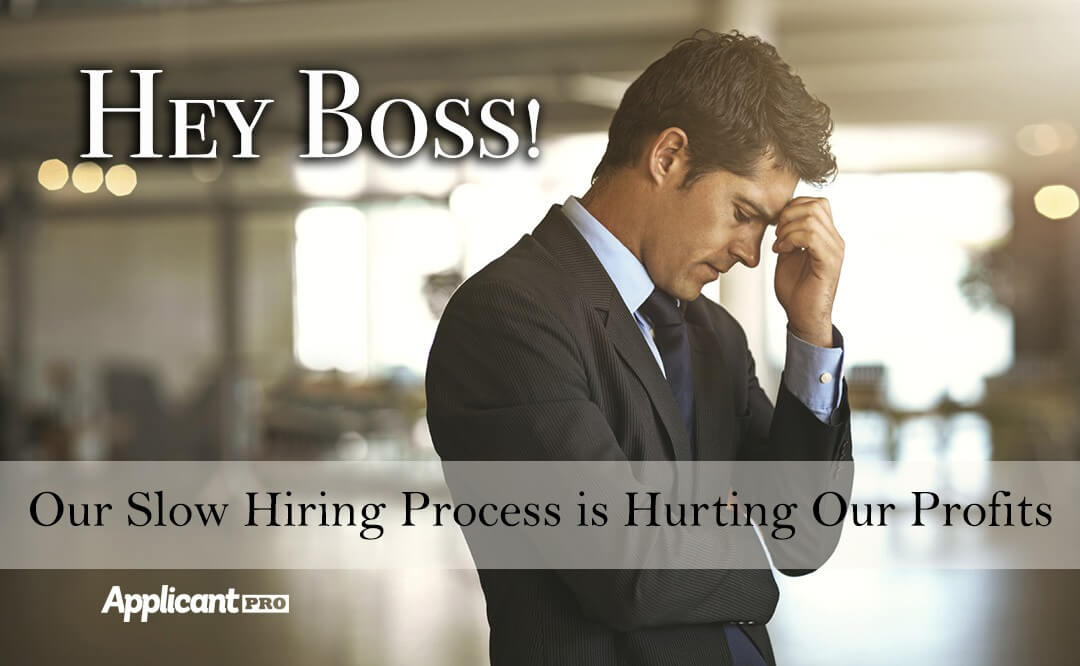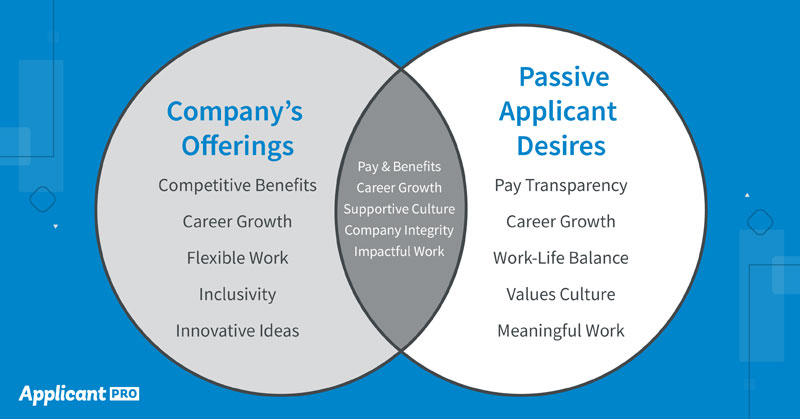

Hey Boss! Our Slow Hiring Process is Hurting Our Profits
Many HR departments struggle tracking and measuring their own metrics, so it is no surprise they face an even bigger challenge trying to translate those HR metrics into something that the rest of the executive team will care about. Lets face it, most HR professionals got in to HR because they love people; if they loved math, they would have become accountants. So as a former accountant, and all around lover of business math, let me act as the translator to bridge the gap as we discuss one of the most common metrics in recruiting.
Time to fill is a measure in days of how long it takes from the date a position becomes available to the date when a new person is hired
HR METRIC: Time to Fill
Everyone in HR knows what “time to fill” means, although a large percentage of them may not know their number off the top of their head. Quite simply, time to fill is a measure in days of how long it takes from the date a position becomes available (person is fired, quits, or a new role is created) to the date when a new person is hired. There are some gray areas on the start and end dates here that can cause this number to vary based on the way your organization computes it (i.e. start date: the day the job became available versus the day the job ad was posted), but what is really important is that you are consistent, and measure the complete process that you are trying to improve. The resulting metric is a total number of days.
HR professionals generally know if their time to fill number is good or bad by comparing it to their past performance or industry averages, but the other members of a company’s management team really don’t know what to do with this metric, or if it is even something worth their time and attention. It boils down to this: HR is talking days to people who generally speak dollars.
What’s required is to convert “time to fill” (days) into something that will fit into the frame of reference of the average manager “cost per vacancy per day” (dollars).
Get More Applicants from Job Boards
Don't post and pray. Get this exclusive FREE cheat sheet and take active steps to dramatically increase the results you get from your job board posts.
BUSINESS METRIC: Cost per Vacancy per Day
A high “time to fill” number simply means that you have a seat in the company without a warm body in it for an extended period of time. To get the attention of other executives, HR needs to quantify the cost for each additional day that the seat remains empty. The equation is pretty easy, but might require that you ask the CFO/Controller for a few numbers.
First, compute the value of each employee per day worked. Take your total annual revenue and divide it by the average number of employees, and divide that by the average number of days your business is open each year.
divided by 260 work days = $577 per employee per day
Now comes the tricky part, for any given role, estimate how critical that job is to the company’s revenue, and multiply the value computed above by the corresponding weight.
- low importance = weight of .1 to .25
- average importance = weight of .5 to .75
- high importance = weight of 1 to 1.5
Using our example above, a vital role has a cost per day of vacancy of between $577 to $865 while a role of low importance is between $57 and $144.
Now, take it a step further by computing the total cost per day for the year. Count how many jobs you have open each year, and either multiply that total by a ball park of the above number (100 openings x $300 per day = $30,000) or be more precise by breaking down the annual openings into groups based on importance (60 openings x $60/day + 30 openings x $300/day + 10 openings x $600/day = $18,600). To really get someone’s attention, divide this number by total annual profit to get a % of profit.
HOW TO USE THIS NEW METRIC: A Real World Example
So to drive this point home, let me walk you through how I would use this metric to justify the purchase of our ApplicantPro Hiring Software. We’ll direct our focus around three of the value propositions for our platform:
- Taking a Job from Creation to Posting: ApplicantPro can streamline this process by using our email-based requisition approval system, using templates to quickly post the approved jobs, and instantly pushing the job to hundreds of job boards with a mere click of your mouse.
- Quickly Driving Applicant Flow: Our job alerts tool, paired with our job ad optimization functionality, can quickly drive qualified candidates to your position. Add in our robust mobile optimized and highly converting career sites, and watch as the applications start flooding in.
- Screening Down to the Top Candidates: HR and hiring managers spend days digging through stacks of unqualified applicants in an attempt to whittle it down to a short list of their top candidates. Our automated screening and disqualifying questions, paired with recorded audio/video phone screens or even a cognitive/behavior job fit assessment can quickly identify and target the most qualified candidates in your group.
Now, let’s do the math. For the company described in our above example, the ApplicantPro system would cost between $1200 to $5000 per year (depending on if they were using audio/video screening or assessments), while shaving at least 3 to 7 days off of their time to fill. Using a very conservative $10,000 total cost per day, the ApplicantPro system would save the organization between $30,000 and $70,000 per year. The “break even” point (where the system pays for itself) would happen if time to fill was reduced by even a fraction of a day.
More importantly, by using this type of proposal, there is no requirement that the money to buy the system be in the “budget.” Instead, the system will be paid for by reducing existing budgeted expenses.
Seems like a no-brainer to me.
Ready to crunch some numbers? Contact us to learn how ApplicantPro can help you!

Get More Applicants from Job Boards
Download this exclusive guide to improve applicant flow from job boards.
Share this article
Related Articles

Elevate Your HR Strategy with ApplicantPro's Full-Suite of HR Tools
Simplify HR with ApplicantPro's all-in-one solution. Our customizable tools streamline recruitment, onboarding, payroll, and benefits management for growing businesses.

Unlocking the Hidden Talent Pool: How to Attract Passive Candidates
Boost your hiring strategy! Learn how to attract passive candidates with ApplicantPro's expert tips, insights, and stats for a stronger talent pipeline.

What is an ApplicantPro Market Analysis?
Discover how our Market Analysis can help you stand out from the competition and attract top talent. From competitor pay reviews to job-seeker personas, our Recruitment Marketing experts provide actionable insights to improve your hiring process.